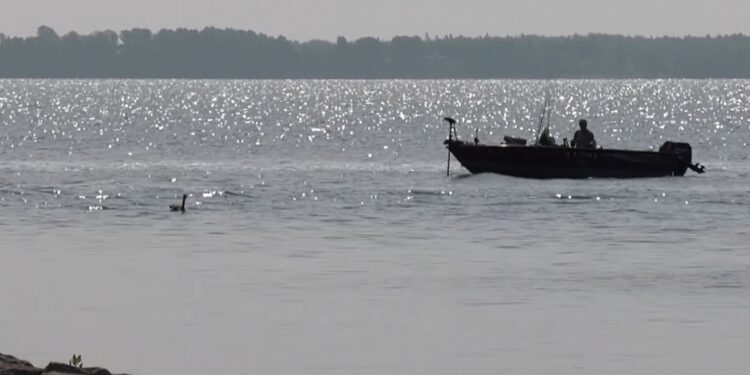LANSING, Mich. (WZMQ)- Once a cornerstone of the Great Lakes’ commercial fishing industry, whitefish populations have seen a steep decline in recent decades, and state fisheries experts say invasive mussels are likely to blame.
Whitefish are native to all five Great Lakes and several inland lakes across Michigan, but are most commonly harvested in the northern portions of Lakes Michigan and Huron. According to the Department of Natural Resources (DNR), commercial harvests have fallen from around 9 million pounds in the 1990s to fewer than 3 million pounds in recent years.
Stephen Lenart, Tribal Coordination Unit Manager with the DNR Fisheries Division, said the downward trend began in the mid-2000s, aligning closely with the spread of invasive quagga mussels.
Quagga mussels are a type of dreissenid mussel, similar to zebra mussels but more widespread in deeper waters. These mussels filter phytoplankton—the base of the aquatic food chain—directly from the water. That limits food availability for zooplankton, which are a critical food source for young whitefish and many other species.
“The food web has shifted,” Lenart said. “Whitefish have done particularly poorly in systems dominated by these mussels.”
Recent studies show that quagga mussels are continuing to expand into deeper offshore areas of Lakes Michigan and Huron, further increasing their impact on phytoplankton and the broader ecosystem.
While Lake Superior’s whitefish population has remained relatively stable, Lenart says it’s still vulnerable if invasive species continue to spread.
“There are dreissenid mussels in Lake Superior, but the water chemistry hasn’t supported large-scale expansion,” he said. “Still, it’s a cautionary tale. These tiny animals can have a massive impact on things we care about.”
Both zebra and quagga mussels are invasive species, and controlling their spread remains a challenge. Experts recommend that boaters and anglers take preventive steps, such as draining live wells, cleaning trailers, and removing aquatic vegetation before moving between water bodies.
“Once the spread has happened, it’s hard to control,” Lenart said. “Public awareness and best practices are our best defense.”
Whitefish are more than just an economic resource. They are a vital part of Great Lakes culture and tribal traditions, having sustained Indigenous communities for thousands of years.
“The hope is to at least maintain some level of stability in the population,” Lenart said. “That’s why this research and monitoring are so important.”


















